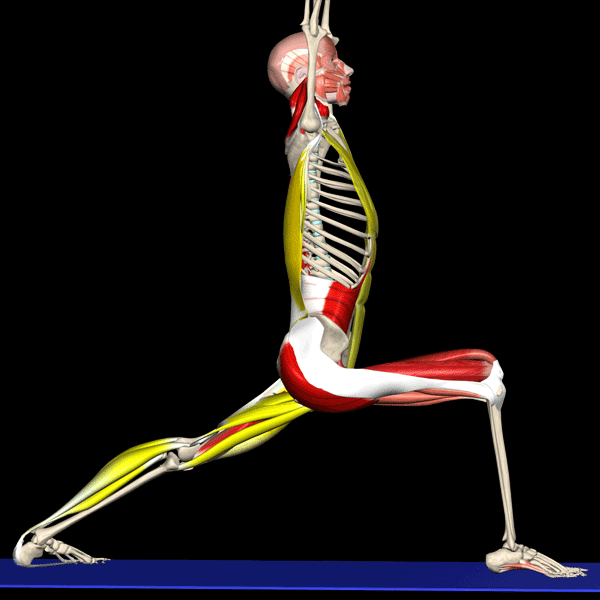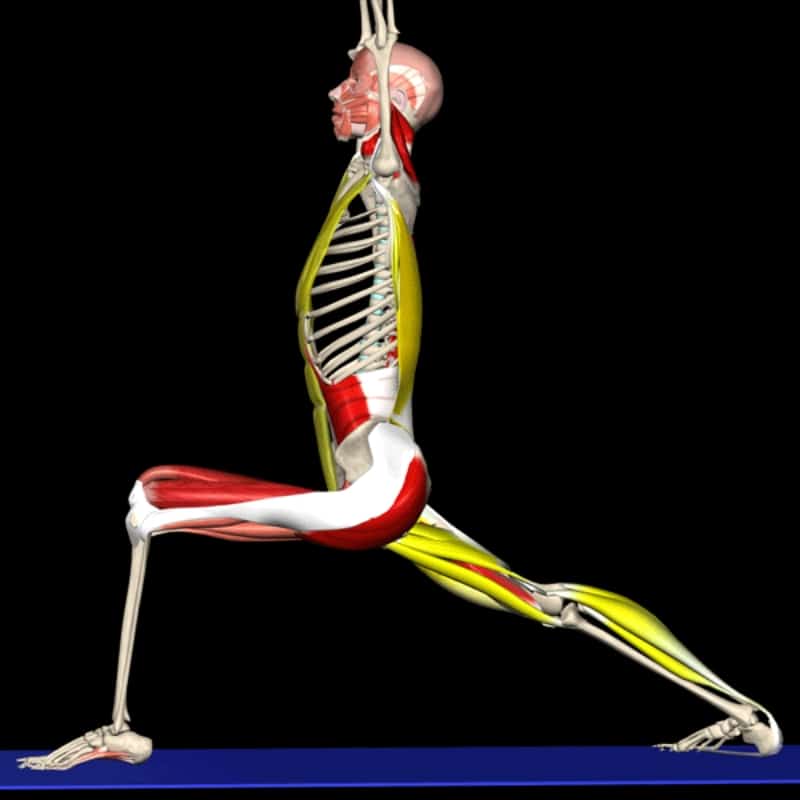The Warrior Pose, also known as Virabhadrasana, is a foundational yoga pose that embodies strength, power, and focus. This standing asana engages multiple muscle groups, promotes flexibility, and cultivates a sense of balance and stability.
This empowering asana has several variants. Here we will review the popular Warrior I, Warrior II, and Warrior III asanas. Each of these asanas offers unique benefits and focuses on different aspects of the body.
In this Muscle and Motion article, we will delve into the essence of each Warrior Pose, exploring their individual characteristics and understanding their differences.

What are the Warrior poses in yoga?
The Warrior poses, known as Virabhadrasana in Sanskrit, are a common group of asanas in hatha yoga. The word “Vira” translates to “hero,” “Bhadra” means “auspicious” or “blessing,” and “asana” refers to “posture.” Hence, Virabhadrasanas can be understood as auspicious heroic postures. These poses are typically performed while standing with a wide stance and outstretched arms. They can be practiced individually or sequenced together for more comprehensive practice. The primary aim of practicing the Warrior Pose is to enhance hip flexibility and strengthen the entire body, targeting various muscle groups.
Warrior I (Virabhadrasana I)
Warrior I is a foundational pose that embodies strength and stability. To perform this pose, start standing, step one foot back, and bend the front knee to a 90-degree angle, keeping the back leg extended and grounded. The torso is lifted, arms raised overhead, with palms facing each other. Warrior I primarily targets the legs, hips, and core muscles while also promoting focus, balance, and a sense of grounding.
Warrior II (Virabhadrasana II)
Warrior II expands upon the foundational aspects of Warrior I, emphasizing openness, expansion, and graceful warrior-like qualities. From a standing position, similar to Warrior I, the arms are extended out to the sides, parallel to the ground. The front foot points forward, while the back foot is turned slightly inward. The front knee is bent at a 90-degree angle, aligning with the ankle. Warrior II strengthens the legs, opens the hips, and engages the upper body, including the shoulders and chest.
Warrior III (Virabhadrasana III)
Warrior III is an advanced variation that challenges stability, focus, and full-body strength as it requires maintaining balance on a single leg. Starting from a standing position, the body leans forward with the arms extending forward alongside the ears. Simultaneously, the back leg lifts off the ground, aligning with the torso, forming a straight line from head to toe. Warrior III requires core stability, leg strength, and a strong mind-body connection. It also demands good single-leg balance and strength in the posterior chain muscles, which include the muscles along the backside of the body, such as the glutes and hamstrings.
What are the main differences between these Warrior poses?
While all three Warrior poses share a common foundation, they differ in body alignment, arm positioning, and the overall energy they evoke.
- Warrior I emphasizes strength, grounding, and reaching upwards, symbolizing the warrior’s upward journey.
- Warrior II emphasizes expansion, openness, and the warrior’s ability to embrace all directions.
- Warrior III embodies balance, stability, and the warrior’s ability to stand tall even in challenging circumstances.
In summary, the Warrior poses, consisting of Warrior I, Warrior II, and Warrior III, offer unique benefits for strength, flexibility, and balance.
Our YOGA APP provides comprehensive guidance, including instructional videos and detailed explanations, to help you master the Warrior Pose and many other yoga asanas while unlocking their full potential.
To explore these poses further and deepen your yoga practice, you can download the Muscle and Motion YOGA APP.
Written by Uriah Turkel, Physical Therapist and Content Creator at Muscle and Motion.


